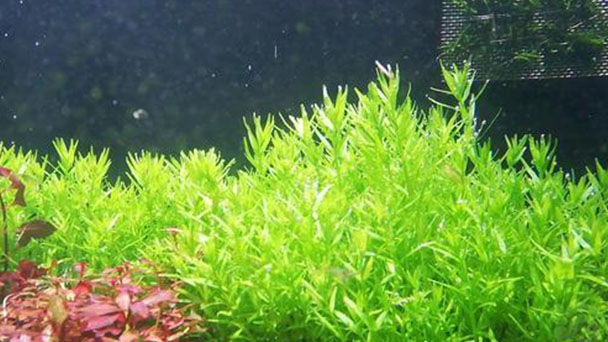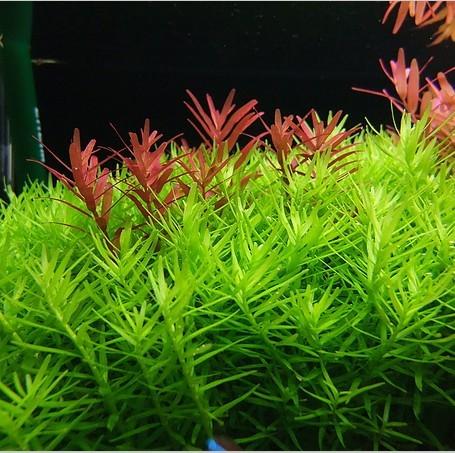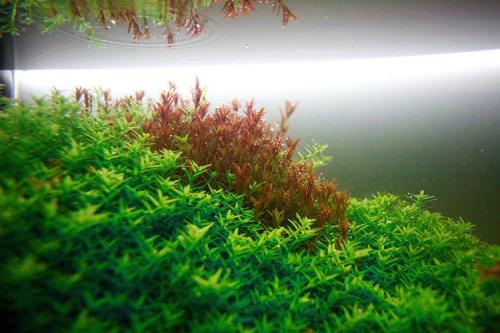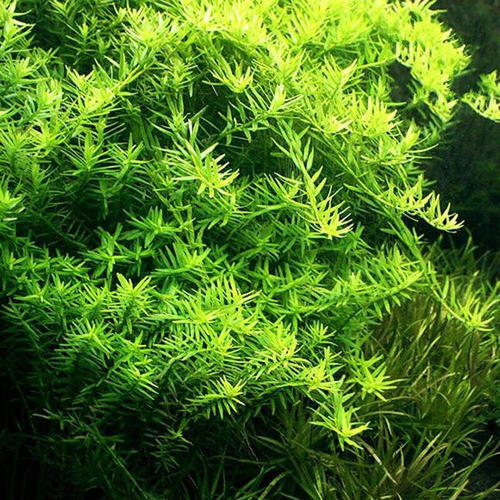Rotala Rotundifolia (Dwarf Rotala) Profile: Plant Info, Care & Propagation Guide
Written by Maggie
Dec 07 2021

Rotala Rotundifolia, commonly called dwarf rotala, is a kind of ornamental aquatic plant that is easy to be arranged and has high plasticity. Rotala Rotundifolia presents different forms in soft water, hard water, strong light, weak light, heavy fertilizer environment. It can be used in front, middle and back scenery according to the needs of landscape design.
Rotala Rotundifolia Picture

Characteristics of Rotala Rotundifolia
Rotala rotundifolia is an annual herb that grows on wetlands. Leaves are opposite or whorled, sparsely alternate, sessile or subsessile; Flowers are small, actinomorphic, solitary or clustered in axils or in terminal spikes or racemes.
Calyx is 3-6 lobed, no appendages or setaceous appendages between lobes; Petals are small, 3-6 or emarginate; rotala rotundifolia has 1-6 stamens.
Ovary of Rotala Rotundifolia is sessile or subsessile, 2-5-locule, ovule numerous, style absent or slender; Capsule is dehiscent into 2-5 locules, fruit wall can be seen under a magnifying glass with dense transverse stripes.
Habits of Rotala Rotundifolia
- Illuminance: 1800 Lux
- The water temperature: 22-30 ℃
- Location: Front, middle and rear
- Hardness: 2-15 DH
- Ph value: 5.5-7.2
- Difficulty: Average
How to Care for Rotala Rotundifolia
Rotala Rotundifolia Light Requirements
There is no doubt that any aquatic plant is phototropic. The phototaxis of Rotala Rotundifolia is also quite strong, so we can consider using phototaxis to control lodging. Not long ago, there was a shop in Handan Trade Street that opened a semi-steel Rotala rotundifolia, but almost no one stood upright. Why? The light is too bright in a tank with no other water plants, and you don't want to go back to KFC to do the temp job when you are bringing in a lot of money every day without going out. Control the light, do not make the light too high. The light control method is to raise the light after the growth of Rotala Rotundifolia is obvious.
Rotala Rotundifolia Planting Dense
In fact, the principle of dense planting and light control is the same, I will not talk about it, but the first requirement of dense planting is sufficient base fertilizer. Basal fertilizer must have, or soon will rot, and is permeable to better, or will rot. More shrimp is needed at the beginning of colonization because many of the leaves of the later plants will rot away.
Fertilizer for Rotala Rotundifolia
Rotala rotundifolia, like other green grasses, requires a lot of iron fertilizer, which synthesizes chlorophyll. And iron fertilizer is not enough, regular spraying of iron fertilizer can make him lusher, we can find the bud in the rapid growth after the head, the amount of iron fertilizer can be increased at this stage. And that's actually what it does against algae, which are a headache if there's not a lot of life, and green algae consume iron fertilizer, as does Rotala Rotundifolia.
Pruning Rotala Rotundifolia
In fact, it is ahead, just how to play the problem, if so a few, cut it. If a lot of them are really thick, like my new 80 cylinders, get ready for the Rotala Rotundifolia and make it 1/3 as big as it is, then just cut it, and it will rot. Cut them in steps, say 30 centimeters wide, with the bottom 10 centimeters the highest, the middle 10 centimeters lower, and then lower again, so that they receive your fertilizer and light to the maximum area after cutting.

Rotala Rotundifolia propagation
Cut a couple of inches off the top of the Rotala Rotundifolia plant and replant. New shoots will sprout from the inter-nodes on the stem left behind. If the initial plant was healthy, you can cut off the majority of the plant, leaving stems a couple of inches in height and new shoots will still sprout from there.
Even if you want a dense bush, plant stems at least half an inch apart to leave room for side-shoots. There should be enough space in the bottom layers even if you want a dense canopy at the higher levels.
Taxonomy of Rotala Rotundifolia
There are about 50 species of Rotala rotundifolia, which are distributed in tropical and subtropical regions. There are 7 species in China, and they are from Southwest China to Taiwan and Northeast China.
The common Rotala Rotundifolia in the market mainly includes several major aquatic plants such as Rotala Rotundifolia, Red Palace, and Indian Rhythmophyllus.
Rotala Rotundifolia (Green Form)
Rotala Rotundifolia is widely used in landscape construction. Its elongated leaf shape and high plasticity are very popular among landscape enthusiasts. It is important to note that Rotala Rotundifolia does not turn red or pink in the best of conditions. In the best of conditions, it is very green.
Rotala rotundifolia/small rotundifolia
The difference in morphology between Rotala rotundifolia and Rotala rotundifolia is actually easy to distinguish. The leaves of the rotundifolia are fat, thick, and oblate.
In terms of color, as the name implies, the rainbow round leaf can get different colors on the same grass. Under good conditions, the upper part will show a beautiful pink color, while the lower part will be slightly green.
Blood reflects the sky: red blood palace
This grass has only recently become popular among continental grass friends. Its gorgeous color makes it the best among the red grasses, especially among the Rotala rotundifolia, which has no Latin name.
Distribution of Rotala Rotundifolia
China, India, Malaysia, Sri Lanka, Indo-China Peninsula, Japan; Rotala Rotundifolia is widely grown in swamps, wetlands, paddy fields. There is a wide range of species in the genus Rotala, so the species of Rotala rotundifolia we have may come from all over the world.
Rotala Rotundifolia Uses
Rotala rotundifolia is a water plant. It grows rapidly, is easy to survive, has a beautiful shape, unwinding leaves, and is of high ornamental value, so it is very popular among players.

Latest Updated
- Benefits of Bugleweed - 7 Science-backed Health Benefits
- Bugleweed Dangers & Side Effects - Is It Poisonous?
- How to Plant Evergreen Trees - What You Should Know
- When to Plant Evergreens - Grow Guide for Evergreen Trees
- 12 Wonderful Evergreen Shrubs for Your Garden
- 12 Popular Evergreen Plants with Pictures for Beginners
- When And How To Prune A Lilac Bush Like a Pro
- How to Grow & Care for Lilac Vine (Hardenbergia Violacea)
- Japanese Lilac Tree (Syringa Reticulata) Care & Propagation Guide
- Shumard Oak Pros and Cons - What to Know
Popular Articles
- Winter maintenance of Antirrhinum Majus
- How to Grow Terminalia Mantaly Tree
- How to Grow and Care for Crossostephium Chinense
- How to grow Antirrhinum Majus in spring
- Peristeria Elata (Dove Orchid) Profile: Info & Care Guide
- Underwatered Snake Plant (Sansevieria Trifasciata) - Signs And How To Fix
- How to Care for Brazilian Jasmine Plant (Mandevilla Sanderi)
- How to Grow & Care for Graptopetalum Purple Delight in Summer
- Rosa Chinensis (China Rose): Plant Growing & Care Tips
- How to Care for Baby Sun Rose (Aptenia Cordifolia)